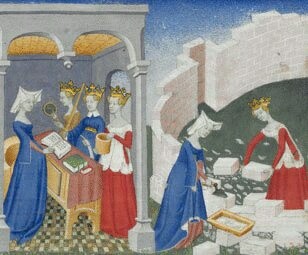There are a few things I love about history. The first is
that it is real people and real events that brought us to where we are. The
second is it is always changing. Alright, changing isn’t the right word but I don't know what other word to use. We often think we know all we can know about history, (at least that is what they teach us in elementary school) but the truth is that
evidence pops up every now and then that corrects our misconceptions about an
event or people. Then there is the fact it is real life, from the lifestyle,
the food, the clothing they wore and everything that put together a world. Finally is that despite what we think it may
be the past but it still effects the here and now, from inspiration in
government, finance and home. Things I don’t like about informing people on
this topic is the myths and misconceptions that everyone takes as truth when
for a long time it has been proven untrue.
One of the biggest myths and misconceptions that drives me
nuts is histories view on women. You know the weak, stupid and useless damsel
in destress image. Now there are definitely a few women who have never fit the
mold but it hasn’t helped the image anyways though it is starting too.
Cleopatra, Godiva, Queen Elizabeth I and II, Jane Austen, the Bronte sisters, and so
many more. These were strong women who made their mark on history but what
about those who didn’t. We are learning more about them too. Images of medieval
women working in men’s labors alongside men or even seemingly on their own.
Records of women who took over their husbands business after their deaths. A
recent relook at bones of Viking warriors were found that the armor did not
make them men (like the original scientist thought) but in fact at least half
of the bodies were women who clearly did some fighting. Some cultures that were
thought to be patriarchal societies are proving to be equal, or matriarchal
societies. Most of these like many Native American Tribes were seen as
patriarchal because of a patriarchal society (the English) trying to make sense
of what they found.
 |
| A women’s life was difficult and often oppressed but images such as these may hint that some women worked outside the strict lines of their gender. This image is from 15th century Italy. |
Then there are the images of women couldn’t make it on their
own. The term spinster comes from the women who did. Many women who never
married or became widows took up spinning to help take of themselves and the
term spinster was given to them. Many knitted or sewed to keep a roof over
their head. For those that lost their husbands, like I said some took over the
business. In The Return of Martin DeGerre,
a book based on court records from a family in France gives an amazing look at
not only a peasant family but a women’s lot. When a women’s husband is sent to
war she continues to work alongside her family on the farm. (This is also about
how she got duped by a stranger who claims to be her husband, which is why
there is a court record.) And Queen Elizabeth served very well unmarried.
 |
| Women carding, combing, spinning and weaving wool in the 15th century. |
Women are strong, brave and just as important to look at. A
commercial for Dwight D. Eisenhower talked about how housewives were the
backbone of America. They fed the family, made sure the children were cared
for, managed the household finances and helped to educate the children for the
future (the commercial’s words not mine). Women are as much the reason why
our culture and our world is the way it is. So no matter how much we can be a
pain in the rear and how many other problems we may have cause (Troy anyone) we
are as important to remember when looking at history.

No comments:
Post a Comment